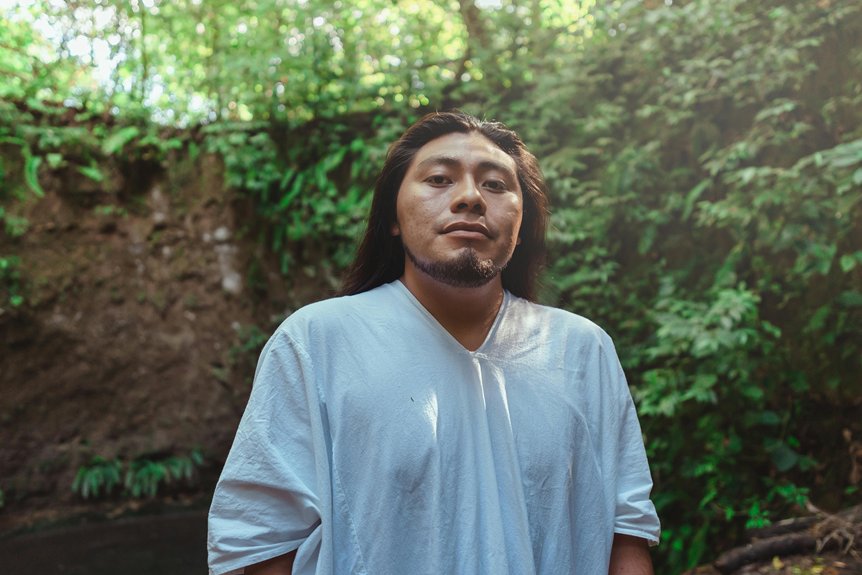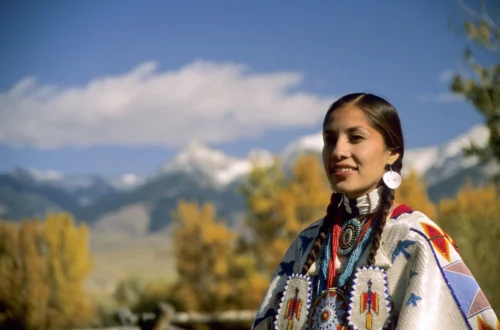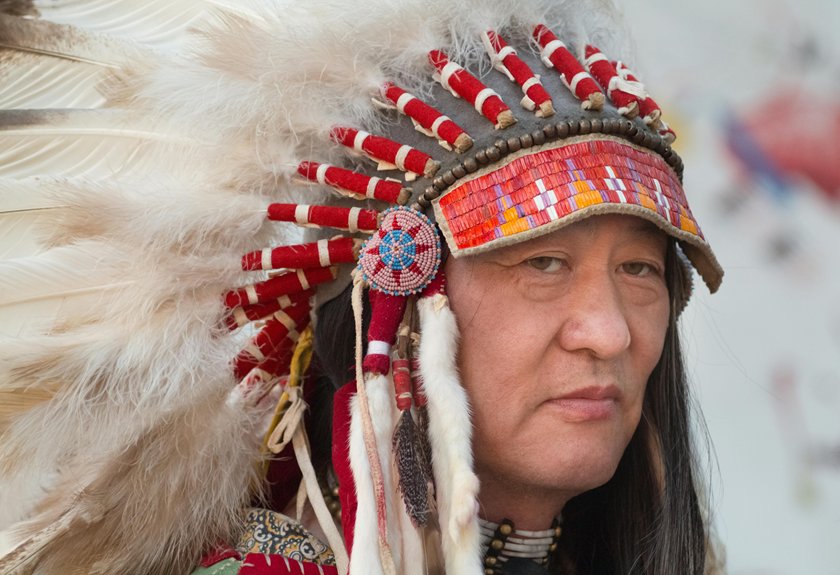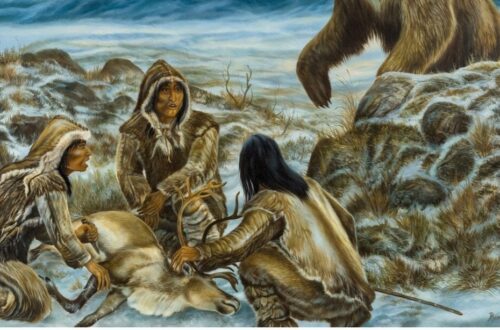Imagine a smooth, unadorned face reflecting the sun’s warmth, a canvas of cultural identity. For many Native Americans, the absence of dense facial hair is rooted in genetic factors that shape hair growth. But there’s more to this story than mere biology; environmental elements and deep cultural meanings intertwine. What do these aspects reveal about their heritage and grooming practices? The journey into understanding this unique characteristic invites us to explore further.
Genetic Factors Influencing Facial Hair Growth
While many factors contribute to facial hair growth, genetics plays a significant role in determining whether you can grow a thick beard or mustache.
In Native American populations, specific genetic traits often lead to reduced facial hair density. These traits can be traced back to ancestral lineage, where certain genes regulate hair follicle development and hormone levels.
For many individuals, this means that facial hair might be sparse or absent altogether. It’s important to recognize that these genetic differences don’t diminish cultural identity or masculinity.
Instead, they highlight the rich diversity within human biology. Understanding these factors helps foster respect for various cultural experiences and encourages appreciation for the unique characteristics that each group possesses.
The Role of Environmental Adaptations
Genetics clearly influences facial hair growth, but environmental adaptations also play a significant role in shaping these traits among Native American populations.
Historically, the climates where many Native Americans lived influenced their physical characteristics. For instance, in harsher climates, facial hair might provide insulation against cold winds, while in warmer regions, less facial hair could help with heat regulation.
Additionally, the natural selection process may have favored individuals with less facial hair due to practical reasons such as hygiene and maintenance.
These adaptations reflect a deep connection between the environment and human physiology. Understanding this interplay helps you appreciate the diversity of traits across cultures, highlighting how evolution and environment shape physical features uniquely.
Cultural Perceptions of Facial Hair
Cultural perceptions of facial hair among Native Americans often reflect deeper values and historical contexts unique to their communities. Many tribes view facial hair as a symbol of masculinity, but this perception varies widely.
In some cultures, smooth faces are seen as a sign of youth and liveliness, while in others, facial hair might be linked to wisdom or power. You’ll find that grooming practices often align with spiritual beliefs; for instance, the absence of facial hair can signify purity or a connection to ancestral traditions.
Understanding these cultural nuances helps you appreciate the diversity of Native American identities, allowing for a more respectful dialogue about their grooming practices and the meanings they hold within their respective communities.
Historical Context of Native American Grooming Practices
Understanding the historical context of Native American grooming practices reveals how deeply intertwined these customs are with their identities and lifestyles. For many tribes, grooming wasn’t merely about appearance; it symbolized respect for oneself and the community.
Rituals often accompanied hair care, with specific styles signifying status, age, or achievements. Traditional practices varied widely among tribes, reflecting their unique environments and cultural beliefs. Some Indigenous people would use natural materials like herbs and oils to maintain their hair, while others might remove body hair for practical reasons.
These grooming customs fostered a sense of belonging and connection to heritage, reinforcing the importance of identity among Native American communities. Embracing these practices showcases the rich tapestry of their cultural histories.
Differences in Hair Follicle Structure
Grooming practices among Native Americans reflect a rich cultural heritage, but the differences in hair follicle structure play a significant role in shaping these customs.
Native Americans typically have hair follicles that produce finer, less dense hair, which contributes to the minimal facial hair growth observed in many individuals. The structure of these follicles affects the thickness and distribution of hair, resulting in sparse facial hair compared to other ethnic groups.
Additionally, the angle at which hair grows from the follicle can influence how visible facial hair appears. Understanding these biological factors helps you appreciate the diversity of human characteristics and the intricate relationship between culture and nature in shaping grooming practices.
The Impact of Diet on Hair Growth
While genetics greatly influence facial hair growth, diet also plays an essential role in determining the health and density of hair. Your nutritional choices impact the vitamins and minerals that support hair follicles.
Consuming foods rich in protein, such as fish, nuts, and legumes, can enhance hair strength. Additionally, vitamins like A, C, and E, along with minerals like zinc and iron, promote healthy hair growth.
Traditional Native American diets, often rich in whole foods and natural ingredients, contribute to overall well-being, which can affect hair density.
Variations Among Different Tribes
Dietary habits can vary considerably among different Native American tribes, influencing not just overall health but also physical traits like facial hair growth.
For instance, some tribes that rely heavily on traditional diets rich in fish and game may exhibit different hair characteristics compared to those with diets focused on agriculture. The nutritional content, particularly vitamins and minerals, can play a role in hair development.
Additionally, cultural practices and grooming traditions differ widely, affecting perceptions of facial hair. While many tribes may be known for minimal facial hair, some individuals within those tribes may grow facial hair differently based on their unique dietary and genetic backgrounds.
Understanding these variations helps you appreciate the rich diversity within Native American cultures.
Influence of Intermarriage and Genetic Mixing
As Native American tribes have historically intermarried with other ethnic groups, genetic mixing has played a significant role in facial hair characteristics. This blending of diverse ancestries contributes to variations in hair growth patterns.
When Native Americans intermarry with individuals from cultures with different genetic traits, such as those with thicker facial hair, this can introduce new genetic influences. However, many Native Americans still retain their ancestral traits, which often include less facial hair growth.
Understanding this genetic interplay helps clarify why facial hair varies among individuals. It’s essential to appreciate the rich history of intermarriage, as it reflects the adaptability and resilience of Native cultures, shaping their identities through the ages while maintaining core characteristics.
The Symbolism of Facial Hair in Native American Culture
Facial hair in Native American culture carries significant symbolism, often reflecting identity, spirituality, and social status.
For many tribes, facial hair can signify maturity and wisdom, marking a man’s journey into adulthood. You might also find that some cultures view hair as a spiritual connection; it embodies life force and individuality.
When you consider social status, certain styles or the absence of facial hair can denote one’s role within the community. In contrast, some tribes embrace ceremonial practices where facial hair is adorned or styled for specific occasions, enhancing cultural identity.
Ultimately, understanding this symbolism offers insight into the deep-rooted values and beliefs that shape Native American life and community dynamics.





